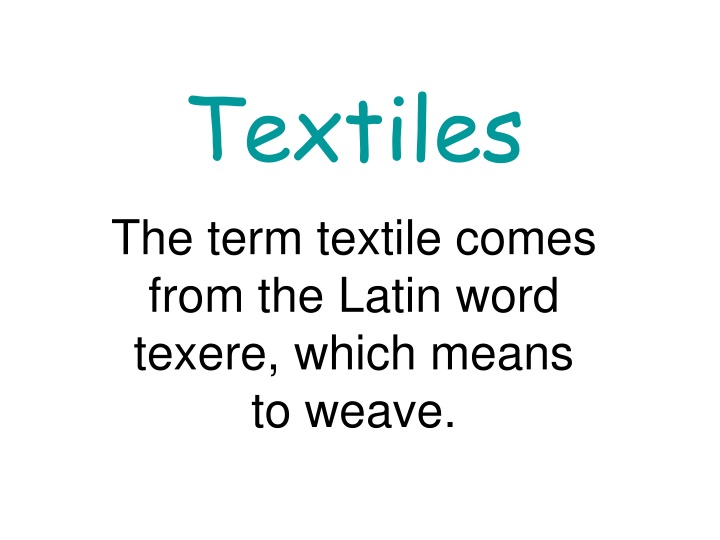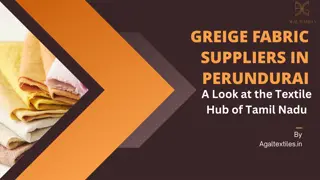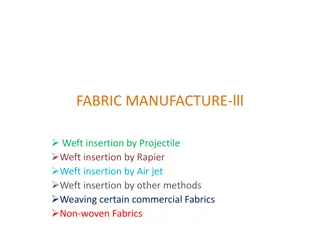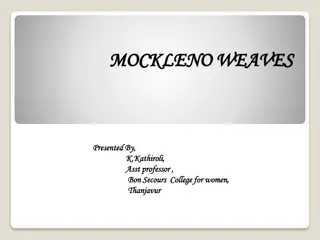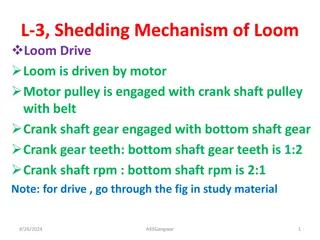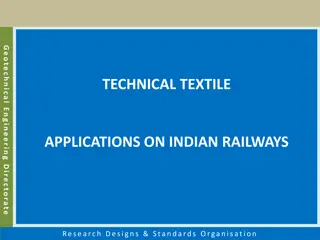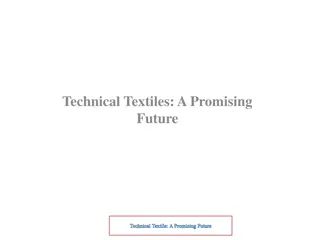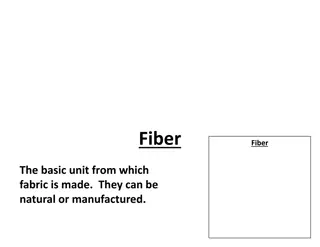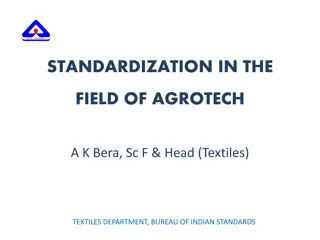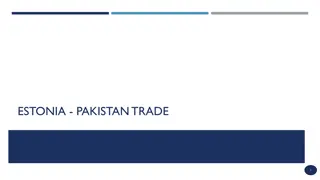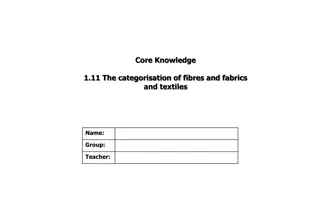The Fascination of Textiles and Weaving Origins
The term textile originates from the Latin word "texere," meaning to weave. Explore the rich history and craftsmanship behind textiles, tracing its roots to ancient weaving techniques and the evolution of this intricate art form. Discover how textiles have shaped cultures, industries, and fashion trends worldwide, reflecting a timeless connection between creativity and craftsmanship.
Download Presentation

Please find below an Image/Link to download the presentation.
The content on the website is provided AS IS for your information and personal use only. It may not be sold, licensed, or shared on other websites without obtaining consent from the author.If you encounter any issues during the download, it is possible that the publisher has removed the file from their server.
You are allowed to download the files provided on this website for personal or commercial use, subject to the condition that they are used lawfully. All files are the property of their respective owners.
The content on the website is provided AS IS for your information and personal use only. It may not be sold, licensed, or shared on other websites without obtaining consent from the author.
E N D
Presentation Transcript
Textiles The term textile comes from the Latin word texere, which means to weave.
Opening Activity Why does a fashion designer need to know about the type of fabric that they make their garments out of?
Why study textiles? You will be able to make better choices as a consumer. You will be able to select the best fabric for a design. You will feel better because you will have selected the correct fabric for the correct function.
Key Words Textile Fiber Staple Filament
Textile Industry Dates back as far as 25,000 B.C. Today, very advanced environment and speed. In the U.S. there are over 700,000 people in the textile industry. Producing enough yardage to travel to the moon and back23 times and circle the globe 14 time! With technology what took several months to produce no takes minutes.
How are the textiles used? 38% for women s, men s and children clothing 27% for home furnishings 23% for industrial or misc.
Careers in Textiles Skilled professionals such as scientists engineers chemists computer specialists fabric designers graphic designers trend specialist
Fiber A fine hair-like structure that can be spun into yarn and made into textile products Staple- Short lengths of fibers .1 to 8 inches long Filaments longer continuous lengths, measured in yards or meters.
Fiber to Fabric Raw materials to fibers Fibers to yarn Yarn to Fabric Mills Take greige goods (unfinished fabric) and dye, print or finish fabric. Converters Sell fabric to stores, manufactures and designers Jobbers/ Retailers
I. Characteristics of Fibers A. Strength: Is it strong enough to be made into fabric? B. Durability: How long will you be able to wear or use the item? C. Resiliency: Can it spring back or bounce back into shape after crushing?
D. Abrasion resistance: Will the fiber wear when it is rubbed? Will the fabric pill? Some fabrics pill; they form little balls on the surface. E. Wrinkle resistance: Cotton and rayon wrinkle easily; polyester does not.
F. Shape retention: Will it keep its shape after wearing or cleaning, or will it stretch or shrink? G. Absorbency: Will it absorb or take in moisture?
